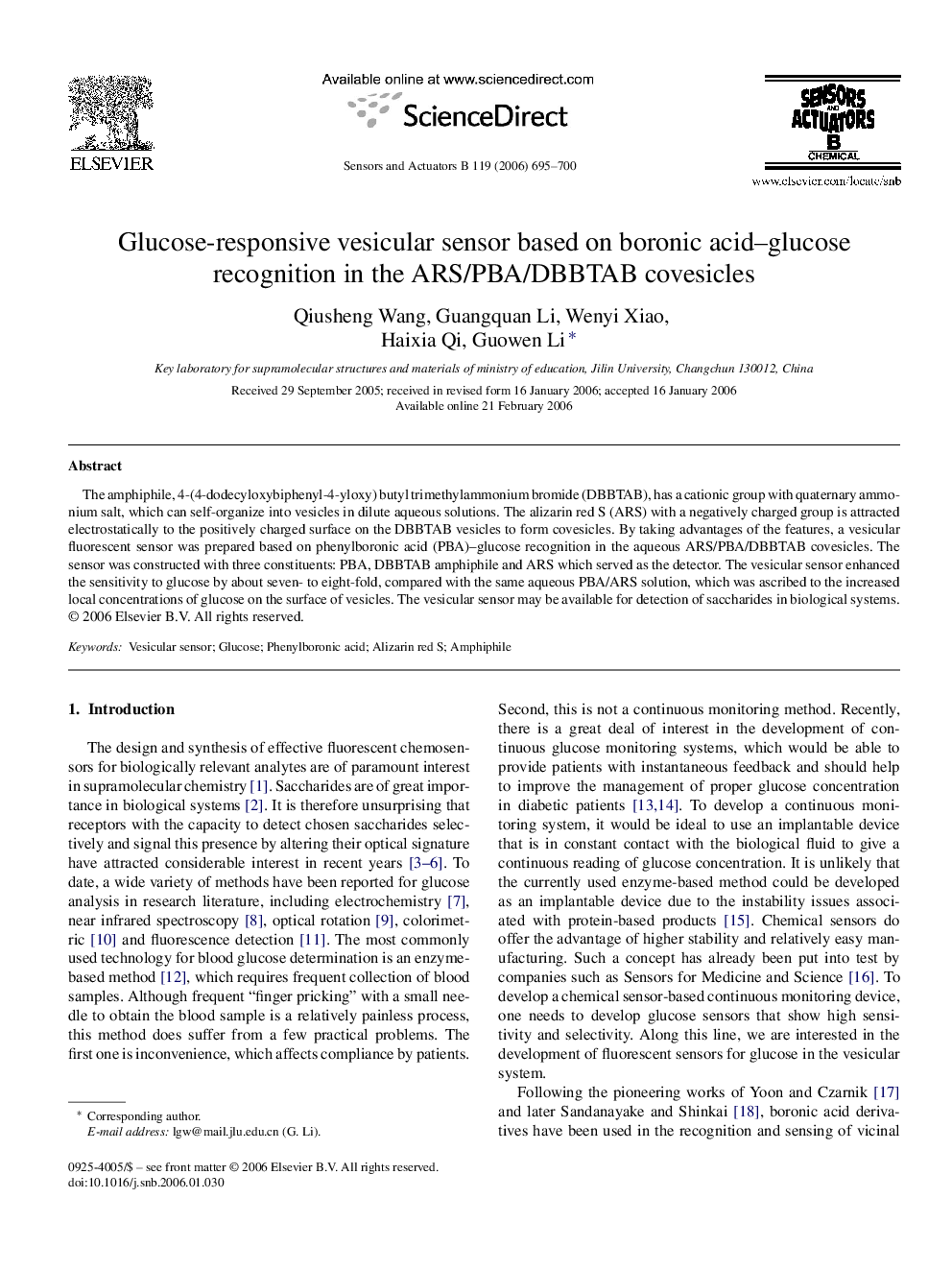| Article ID | Journal | Published Year | Pages | File Type |
|---|---|---|---|---|
| 747101 | Sensors and Actuators B: Chemical | 2006 | 6 Pages |
The amphiphile, 4-(4-dodecyloxybiphenyl-4-yloxy) butyl trimethylammonium bromide (DBBTAB), has a cationic group with quaternary ammonium salt, which can self-organize into vesicles in dilute aqueous solutions. The alizarin red S (ARS) with a negatively charged group is attracted electrostatically to the positively charged surface on the DBBTAB vesicles to form covesicles. By taking advantages of the features, a vesicular fluorescent sensor was prepared based on phenylboronic acid (PBA)–glucose recognition in the aqueous ARS/PBA/DBBTAB covesicles. The sensor was constructed with three constituents: PBA, DBBTAB amphiphile and ARS which served as the detector. The vesicular sensor enhanced the sensitivity to glucose by about seven- to eight-fold, compared with the same aqueous PBA/ARS solution, which was ascribed to the increased local concentrations of glucose on the surface of vesicles. The vesicular sensor may be available for detection of saccharides in biological systems.
